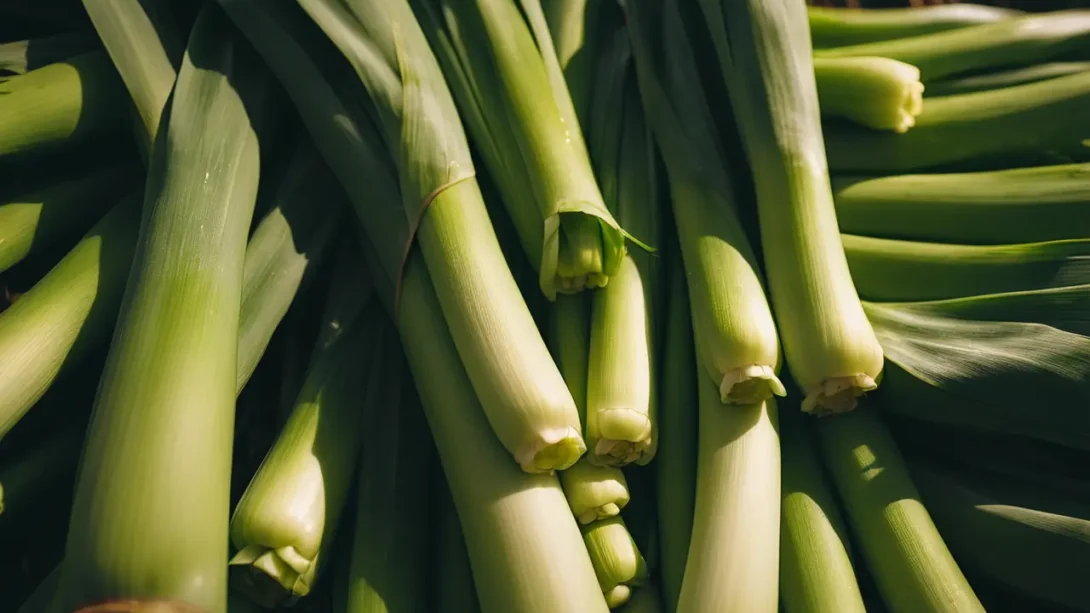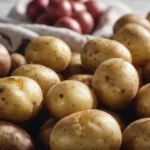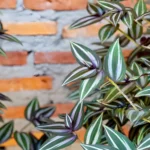Leeks, with their mild onion-like flavor, are a staple in many kitchens around the globe. They enhance dishes ranging from soups and stews to quiches and salads. However, their larger size and unique storage needs compared to other alliums like onions and garlic mean that knowing how to store leeks properly is essential. This guide will provide you with a variety of methods to ensure your leeks remain fresh and flavorful, whether you’re looking to keep them for a few days or several months.
Leeks
Leeks, members of the allium family, are distinguished by their long, white stems and green, slightly bulbous leaves. They are prized for their subtle, sweet flavor, which can elevate a wide array of dishes. Unlike onions and garlic, leeks are more prone to wilting and losing their crisp texture, making optimal storage conditions crucial.
The seasonality of leeks affects their availability and can influence the best storage methods. Typically harvested in the fall, leeks can last through the winter if stored correctly, providing a fresh vegetable option during colder months.
Preparation for Storage
Before storing leeks, proper preparation is key to extending their shelf life and preserving their quality. Begin by removing any damaged outer leaves. Trim off the root hairs and the darkest portion of the green leaves, as these parts are typically not used in cooking. However, if you prefer to use the entire leek, adjust your cleaning method accordingly.
- Cleaning: Rinse the leeks under cold running water to remove any dirt or sand trapped between the layers. Splitting them lengthwise from just above the white part to the green ends can make cleaning easier, especially if using the whole leek.
- Trimming: For most storage methods, trimming the leeks to fit your storage container or bag is helpful. However, if refrigerating or placing them in water, keeping them whole can maintain freshness longer.
- Drying: After washing, gently pat the leeks dry with a clean kitchen towel or paper towels. This step is especially important if you plan to refrigerate or freeze them, as excess moisture can accelerate spoilage.
Short-Term Storage Methods
For those planning to use their leeks within a week or two, short-term storage methods can keep them fresh and ready to use.
Refrigeration
The refrigerator is ideal for short-term leek storage, with a few preparations to help retain moisture and flavor.
- Wrapping: Wrap leeks loosely in a damp paper towel, then place them in a plastic bag. The paper towel helps maintain humidity, which is crucial for keeping leeks fresh. Do not seal the bag tightly; allowing for some airflow will prevent excess moisture buildup, which could lead to rot.
- Crisper Drawer: Store the wrapped leeks in the crisper drawer of your refrigerator. This drawer is designed to hold more humidity than the rest of the fridge, providing an optimal environment for leeks.
Hydration
Another method for short-term storage is keeping the leeks in water.
- Water Container: Place leeks upright in a tall container filled with enough water to cover the roots and base of the white stem. Like flowers in a vase, leeks can continue to draw water, staying hydrated and fresh.
- Change Water Regularly: Refresh the water every few days to prevent bacterial growth. This method can keep leeks fresh for up to two weeks.
Long-Term Storage Solutions
For those looking to extend the freshness of leeks beyond the short term, several long-term storage methods can be employed. These techniques are ideal for preserving leeks for several months, ensuring a supply of this flavorful vegetable even in the off-season.
Freezing
Freezing is an effective way to preserve leeks for long-term use. The process is straightforward but requires blanching to maintain the best texture and flavor.
- Blanching: Before freezing, leeks need to be blanched. This process involves boiling the prepared leeks for 30 seconds to 1 minute and then immediately plunging them into ice water. Blanching halts enzyme activity that can cause loss of flavor, color, and texture.
- Drying: After blanching, dry the leeks thoroughly to prevent ice crystals from forming during freezing. Pat them dry with clean kitchen towels or let them air dry on a clean surface.
- Packing: Place the dry, blanched leeks in airtight freezer bags or containers. Removing as much air as possible from the bags will help prevent freezer burn. Label each bag with the date of freezing.
- Freezing: Lay the bags flat in the freezer to allow the leeks to freeze quickly and evenly. Once frozen, they can be stacked to save space.
Drying
Drying is another excellent method for long-term storage of leeks, particularly if freezer space is limited. Dried leeks can be rehydrated for use in cooked dishes or used as is in soups and stews.
- Preparation: Thinly slice the cleaned and trimmed leeks. The thinner the slices, the quicker they will dry.
- Air Drying: Spread the slices out on a clean, dry surface in a well-ventilated room. Turn them occasionally to ensure even drying. This method can take several days.
- Dehydrator: For a quicker, more uniform drying process, use a food dehydrator. Follow the manufacturer’s instructions, typically setting the dehydrator at a low temperature for several hours until the leeks are completely dry.
- Storage: Once dried, store the leek slices in airtight containers in a cool, dark place. Vacuum-sealed bags can extend their shelf life even further.
Advanced Storage Techniques
Beyond freezing and drying, there are advanced storage techniques that can offer unique flavors and textures, adding versatility to your culinary repertoire.
Vacuum Sealing
Vacuum sealing, followed by freezing, can significantly extend the shelf life of leeks by removing air that contributes to freezer burn.
- Preparation: Blanch and dry the leeks as described in the freezing section.
- Sealing: Place the leeks in vacuum seal bags and use a vacuum sealer to remove the air and seal the bags.
- Freezing: Store the vacuum-sealed leeks in the freezer. This method can keep leeks fresh for up to a year, maintaining their texture and flavor.
Pickling
Pickling is a creative way to store leeks that also provides a tangy treat. Pickled leeks can be used as a condiment, in salads, or as a flavorful addition to sandwiches.
- Prepare the Brine: A basic brine consists of vinegar, water, salt, and sugar, heated until the salt and sugar dissolve. Spices and herbs can be added for extra flavor.
- Pack the Jars: Place the prepared leeks in sterilized jars and pour the hot brine over them, leaving some headspace.
- Seal and Store: Seal the jars and let them cool before storing them in the refrigerator. Pickled leeks are best after a few weeks of aging and can last several months in the fridge.
Troubleshooting Common Storage Issues
Even with the best preparation and storage methods, you might encounter some issues while storing leeks. Here are solutions to common problems, ensuring your leeks stay fresh and usable for as long as possible.
Mold and Spoilage
- Cause: Excess moisture is a common culprit for mold growth and spoilage in stored leeks.
- Solution: Ensure leeks are dry before storage, especially if refrigerating or freezing. In the fridge, wrap leeks in a slightly damp paper towel rather than a wet one to maintain the right humidity level without overdoing it.
Wilting and Softening
- Cause: Leeks stored for too long or in improper conditions may become wilted or soft.
- Solution: For leeks beginning to wilt but not yet spoiled, use them in cooked dishes where texture is less critical. Consider blanching and freezing leeks that you cannot use immediately.
Off-Flavors in Frozen Leeks
- Cause: Freezer burn or inadequate blanching can affect the flavor of frozen leeks.
- Solution: To prevent freezer burn, remove as much air as possible from freezer bags. Ensure leeks are blanched properly to preserve flavor before freezing.
Final Tips for Leek Storage
Maximizing the shelf life of leeks and maintaining their quality involves more than just proper storage techniques. Here are final tips to ensure the best outcomes:
- Regular Checks: Periodically inspect stored leeks for signs of spoilage or dehydration, especially those in the refrigerator or in water. Remove and discard any that show signs of mold or have become slimy.
- Optimal Use: Use leeks stored in the refrigerator or water first, as these methods have shorter shelf lives. Save frozen or dried leeks for when fresh supplies are low.
- Rotation: Practice first-in, first-out (FIFO) principles by using older stored leeks before newer ones. This rotation ensures that none are forgotten and allowed to spoil.
Conclusion
Storing leeks effectively allows you to extend their usability, reducing food waste and ensuring you have access to their unique flavor year-round. Whether opting for short-term methods like refrigeration or long-term solutions such as freezing or drying, proper preparation and storage techniques are key. By following the guidelines outlined in this article, you can troubleshoot common issues and enjoy fresh, flavorful leeks in your cooking, no matter the season. Remember, the effort you put into storing your leeks not only preserves their quality but also maximizes your culinary options, making every dish a potential delight.



